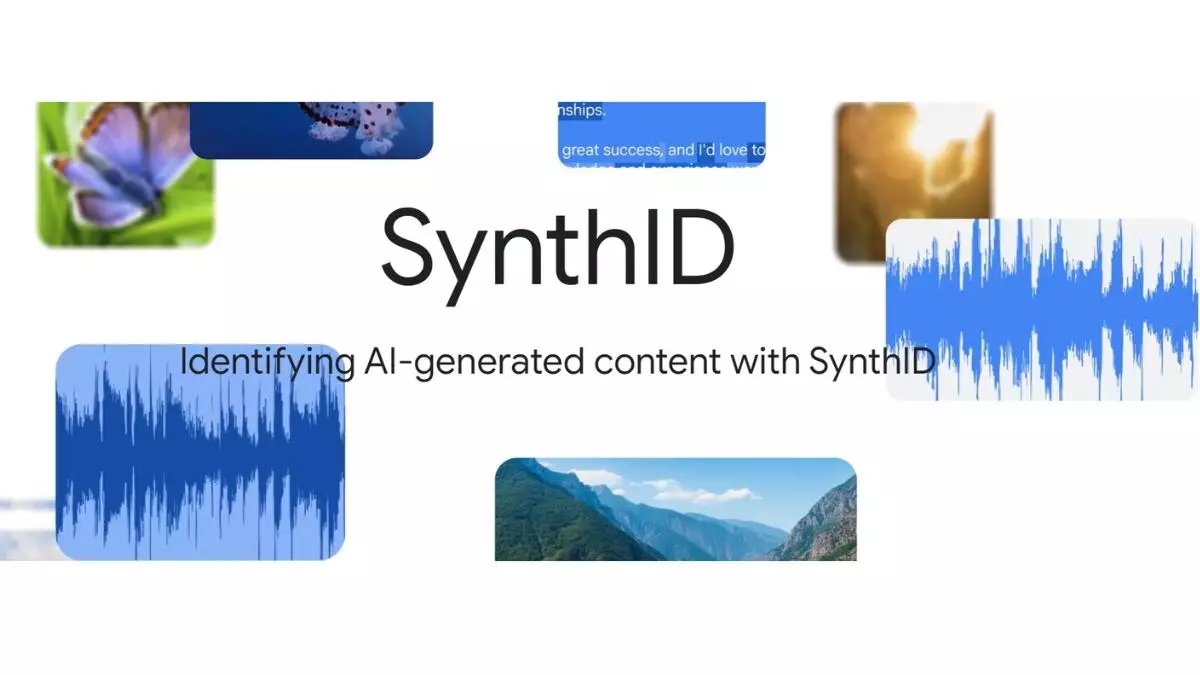In a groundbreaking move for digital content authenticity, Google DeepMind unveiled SynthID, a sophisticated watermarking technology aimed at identifying AI-generated text. Launched recently, this innovative tool has garnered significant attention as it promises to revolutionize how businesses and developers handle AI-generated content. By enabling swift detection of AI-generated texts, SynthID not only facilitates authenticity but also addresses growing concerns about misinformation and content manipulation in the digital realm.
SynthID operates across multiple modalities—not just limited to text but also extending to images, videos, and audio, marking a comprehensive approach to watermarking. In its current form, however, access is granted exclusively for text-related applications to businesses and developers. This targeted release reflects a cautious yet strategic approach, allowing Google DeepMind to evaluate the tool’s effectiveness and the reception within the industry before broader deployment.
Accessing SynthID is streamlined through the updated Responsible Generative AI Toolkit, enhancing user engagement with the tool. Furthermore, its availability on Google’s Hugging Face listing signifies an intent to democratize the technology, ensuring that a wider array of users can integrate this capability into their systems. This open-source strategy demonstrates a commitment to both transparency and innovation.
The advent of AI-generated text has significantly transformed the landscape of online content. According to a study by Amazon Web Services AI lab, a staggering 57.1 percent of sentences online, particularly those translated into multiple languages, are potentially AI-generated. While some may view this influx of content as harmless, it raises essential questions about integrity and authenticity in communication.
The dangers become evident when considering the potential misuse of AI-generated texts. Malicious actors can deploy these tools to disseminate misinformation, skew public opinion, and interfere with significant social events, such as elections or public conversations. Hence, the relevance of SynthID extends beyond mere technological advancement; it touches the very foundation of trust and truth in our digital interactions.
Detecting AI-generated text has proven to be a formidable challenge due to the inherent properties of language and the capabilities of advanced AI models. Traditional watermarking techniques are often ineffective; the task becomes increasingly complex when considering that bad actors can easily rephrase or modify the content to bypass detection. This gap in detection capabilities underscores the importance of SynthID’s innovative approach.
SynthID employs a unique machine learning strategy to watermark content. By analyzing the subsequent word probability after a given word, it can intelligently embed synonymous terms throughout a text. For instance, the word “extremely” could be followed by a limited range of synonyms, allowing SynthID to replace it with less common alternatives sourced from its extensive database. This dynamic adaptation not only embeds a watermark but also preserves the readability and coherence of the content.
Beyond text, SynthID’s watermarking techniques extend to images and audio, showcasing its comprehensive design. For visual media, the technology deftly embeds watermarks into pixel structures, creating invisible markers that can be easily identified through SynthID’s detection mechanisms. This pioneering method ensures that the integrity of the image is maintained, while still providing a way to trace its origin.
In audio applications, the process enters a visual realm as audio waves convert into spectrographs, where watermarks are embedded within the visual data. This multimodal capability highlights SynthID’s potential as a robust tool for various content forms, enhancing traceability across platforms. However, it’s important to note that these features remain limited to Google’s ecosystem for the time being, pending future expansions.
SynthID represents a significant stride in the ongoing battle for authenticity in an era dominated by AI-generated content. While the tool’s current offerings are limited to text, its implications for other modalities suggest a comprehensive approach to tackling misinformation. By embedding its watermarking system deeply into AI workflows, SynthID not only facilitates the identification of AI-generated content but also plays a vital role in shaping responsible practices moving forward. As digital content continues to evolve, tools like SynthID are essential in preserving trust in digital communication.


Leave a Reply